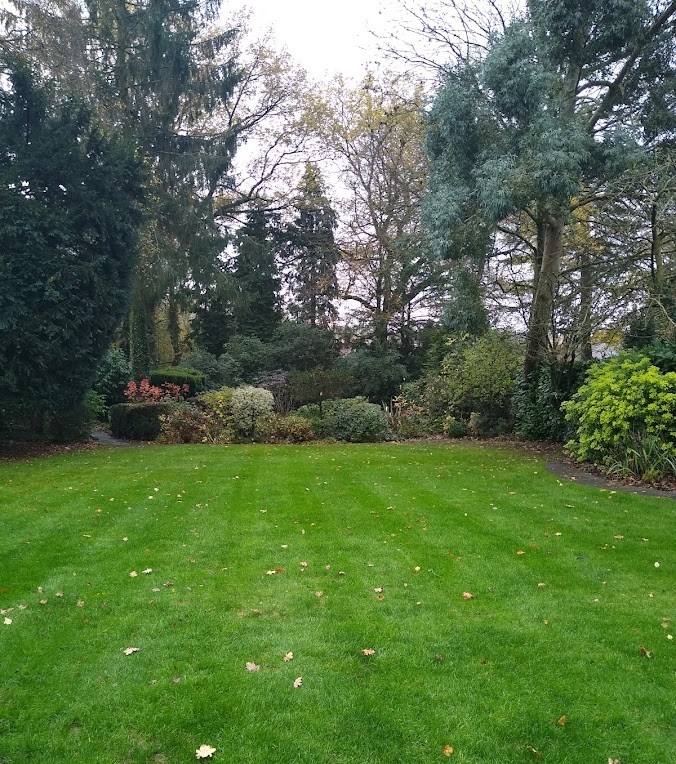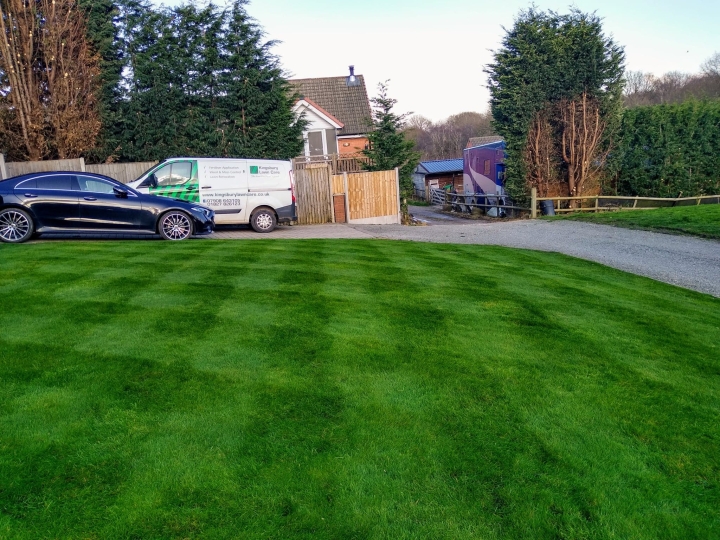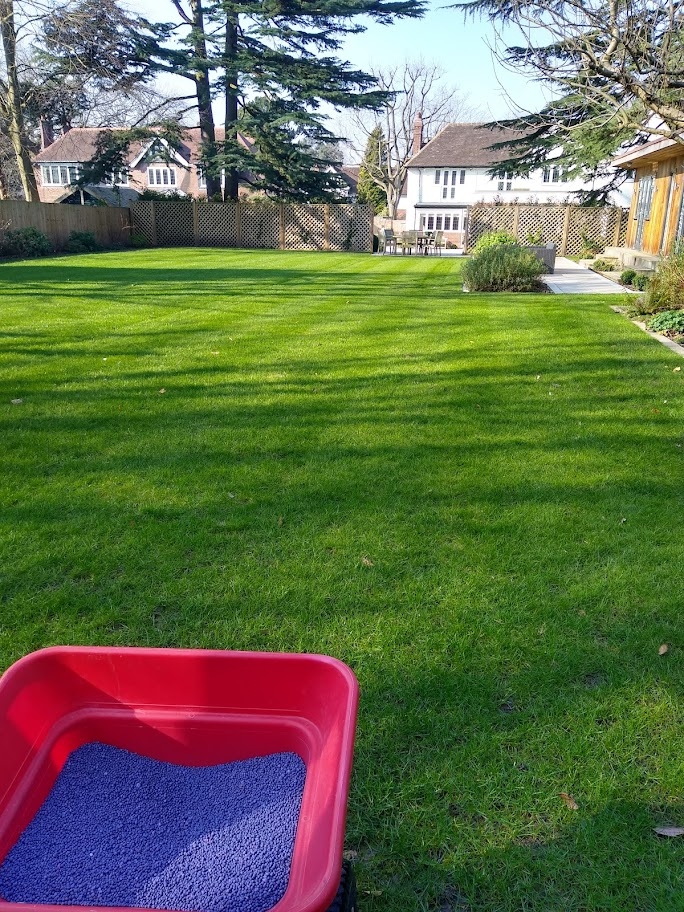Autumn Lawn Care Secrets...
Autumn can be a difficult season for your lawn and garden. As the daylight and temperature decreases, so with it does the perfect growing conditions of summer. We have to make some changes.
This article looks to share with you our top autumn lawn care secrets, if this be autumn lawn feed, aeration or moss control - we're going to share it all here!
Autumn Lawn Care
Autumn is a wonderful season for our lawns. As the air gets a little fresher and the days a little shorter, we're safe in the knowledge that we're going to have a reasonable soil temperature on our side for a little longer and welcome, dependable rainfall to work with following the summer months.
As a lawn care service covering the West Midlands, we visit thousands of lawns and see the common mistakes through autumn and into winter time and time again. We think this article might be of great help to the fellow lawn lovers out there!
Here, we're going to share our top 7 Autumn Lawn Care Secrets. If your lawn is still struggling from drought stress - this might not be the article for you - you may need to go back a step to our last post:
1) Clear Those Leaves
As we edge further into autumn, daylight hours continue to shorten and the sun is a little lower in the sky. Whereas this is a favoured time of year for many, our lawns can't produce the same level of food for themselves as they did last month.
Leaves add to the problem, staving lawns for light and air movement.
Leaves should be cleared from lawns as frequently as possible - twice per week as a guide dependent on the leaf fall. This will keep the lawn far happier and the garden tidy.
When lawns are left under leaf cover, the grass starts to yellow and thin out and if for too long, die completely. Leaves left in situ will also contribute to moss development and disease. Leaf clearance is a vital task!


This image shows a rear that we provide lawn care services for near Walsall which suffers from shade due to protected trees
2) Reduce Shade
Shade on the whole doesn't suit lawns. Grass is very hardy and most grass types can survive shaded conditions, but it's certainly doing things the hard way!
If you are able to remove some of this shade, if it be low tree branches, shrubs or the trimming of hedges, now is the perfect time with bird nesting season complete and your lawn gasping for as much light as possible.
We are always in favour of removing shade, providing it doesn't hamper the character of your garden. For a lawn to flourish some tree surgery is sometimes needed.
Not all shade can be removed however when thinking of walls, buildings and protected trees. However, there are some grasses which cope better (fescues) than others (ryegrasses) in shaded conditions. Sometimes, the incorrect seed mix / turf is used in the first instance which leads to a deterioration of a lawn through the winter months.
Regardless of grass type, if you have a shady garden, we would strongly recommend increasing your height of cut to 40-50mm. This provides the grass leaves with more opportunity to make use of the little light that it may be able to access from October through to February.
3) Brushing
Some may feel that brushing a lawn is overboard autumn lawn maintenance, but it has so many benefits that need to be taken advantage of. If your lawn suffers from worm casts (the small deposits of soil which some earthworms bring to the surface) then you may already understand the importance of brushing!
Your lawn will sit damp if due to rainfall or dew for much of the autumn. Brushing before cutting the lawn will:
- Help dry the leaves of the grass, knocking water droplets to the soil for a better quality of cut
- Help to stand the grass up prior to cutting - so your mower can get those straggly bits!
- Help to disperse worm casts prior to mowing so these are not squashed by the mower or your feet, damaging grass coverage
There isn't a product currently licenced for worm control, nor do we want to harm worms which are vital for a healthy soil. Regular brushing is the best way to manage them in a lawn care setting. At least we're not mowing quite as frequently in the autumn!
4) Consider Your Lawn Mowing
If the grass is growing (or if it's not snowing) then the grass needs mowing!
Your lawn will be growing providing the soil temperature does not drop below 5c. It's quite a low threshold! 5-10c will mean slow growth for your lawn, and will required mowing every 2-4 weeks.
If there is no, or very few frosts or snow, then growth may continue until the end of November at the earliest, and sometimes into January in the Midlands. Who knows what winter will bring!
Cut the lawn on a higher than usual setting, remembering not to cut more than a third (ideally less) of the total height of the grass on any given day.


5) Autumn Lawn Feed
There are almost endless options when it comes to autumn lawn feed! We'll try our best!
Nitrogen (N) is required for the healthy growth of your lawn. During autumn months this isn't needed as much as during the summer. Dependent on the exact timing of your autumn fertiliser and the release pattern of it, a medium to low nitrogen product is advisable.
Phosphorus (P) and Potassium (K) are further main nutrients required for healthy lawn growth. These are responsible for root growth and development and disease resistance. These are commonly included at a higher amount in late summer or autumn in preparation for winter months.
Magnesium (Mg) and Calcium (Ca) round of the major nutrients. These aren't required in high levels but provide colour and aid plant cells. Our Soil Improver applications are high in both of these major nutrients.
We use three differing autumn products dependent on the needs of our lawns as part of our lawn treatment services.
Liquid or Granular Autumn Feed?
There are so many options again, but it's important that your lawn has a source of nutrition while we expect growth to continue, so but sure that the longevity of your autumn fertiliser can match what the grass needs.
6) Autumn Moss Treatment
An autumn moss treatment is key to a fantastic lawn in a UK climate!
Iron (Fe) is a micro-nutrient which is used in most cases to control moss when applied at the correct rate. Too low and this will give a light greening effect on the grass, too high and you could end up with a black lawn!
Iron provides winter hardiness, strengthening the grass and improving colour, so even if there isn't much moss in your lawn just yet, then a light moss treatment will still provide benefits.
Fe can be applied in both granular and liquid form. We don't feel that granular iron is suitable in lawn care as it is tough to make an even coverage, and it will stain lightly coloured slabs! We see stains all the time due to DIY applications or even from some fellow lawn care companies!
We use iron in liquid form component within our autumn, winter and spring treatments to provide moss control, colour and wider turf benefits. We go a step further adding a product enhancing wetting agent to wick the iron deep into the moss giving fast, effective and consistent results!
As PA1/6 qualified operators and as a Lawn Assured Accredited service, we have the ability to mix liquid products to the needs of our lawns. Our semi-organic autumn fertiliser high in plant sugars smells amazing!


7) Aeration
Lawn Aeration is the mechanical process of spiking a lawn. The months of August - November are a fantastic time to do this, but can be achieved much of the year providing the corrective machine is used and soils are receptive.
Following on from the record breaking 2022 heat, we are seeing a great deal of localised dry patch. This is a fungus which is repelling water from areas of lawns, leaving soils very dry in places, even following autumn rainfall. A great deal of this is will go unnoticed until next year.
Lawns become compacted over time and the aeration process aids this decompaction to aid lawn health.
Lawn Aeration improves water movement through the soil, along with enhancing root growth - making lawns more sustainable through increasing the air space within soils - a vital component for any productive growing medium.
Following aeration is often a great time to make applications of a range of products such as our Soil Improver or Stress Buster applications.
It's important not to aerate soils which are waterlogged or too soft for the weight of a machine. This will only cause additional compaction and not deliver the above benefits to your lawn. Dependent on the soil type and recent weather conditions, we would not advise aerations beyond November for these reasons.
How We Can Help
Our Lawn Maintenance Programme includes a key autumn visit between October and December which is made up of:
A soil-boosting organic liquid fertiliser high in plant sugars and trace elements
A moss control with new product enhancer
A selective herbicide where required for weed control - typically for lawns new to our service

We apply a range of professional products to our lawns all year around to firstly improve and then keep in tip-top condition
These autumn lawn treatments make for the perfect cocktail for the time of year for a greener, stronger lawn able to better retain grass density through the tougher autumn months. Best of all, the above treatments are all for the price of a single visit AND includes a complementary assessment with your first treatment. Even our starter programme delivers unrivalled value.
The best time to start with a lawn care treatment programme is yesterday - but today comes a close second. As above, our service delivers results all year around.
If we are able to help in any way, please feel free to submit a contact form, or speak to us now on 01827 826123.
